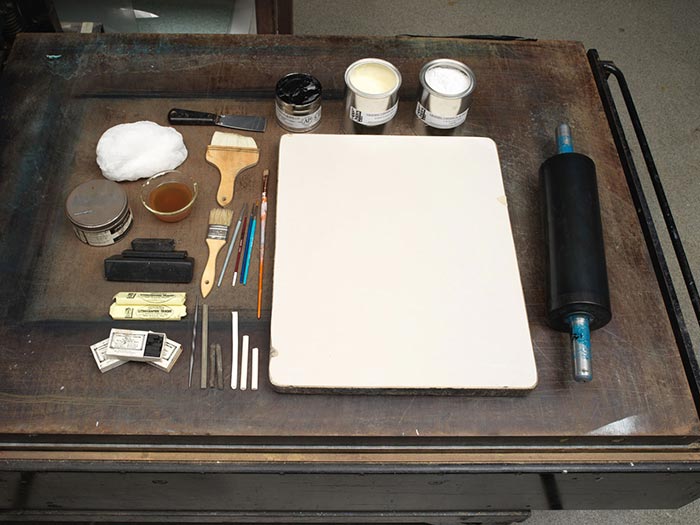The Wild West in Darktown: The Buffalo Chase
Publisher Currier & Ives American
Not on view
The late nineteenth-century Darktown prints by Currier & Ives depict racist stereotypes that are offensive and disturbing. The Metropolitan Museum of Art preserves such works to shed light on their historical context and to enable the study and evaluation of racism.
In this print, three Black (Afican American) cowboys on horseback chase two "buffalos" down a rural town street. In fact, each "buffalo" is a full animal skin draped over two men -- their legs are visible beneath the head and rump of the "animal." At right, a dog runs ahead, yet turns its head to glance back at the beasts behind him. The lead cowboy (center) rides a brown horse and fires guns at the "buffalos." Sporting a mustache and goatee, he has flowing black hair, and wears a wide-brimmed hat, a fringed buckskin jacket, buckskin pants and boots. At left (behind the lead rider), the second rider (riding a donkey, rather than a horse, as his steed has longer ears) holds a whip in his raised left hand. He is followed by a partially depicted third rider (shown with head and torso only). In the background-- extending from the center to the right of the image, a crowd of Black spectators watch from behind a white wooden fence. In addition, a man and two boys watch from a tree (center), and one man sits on a rooftop (beside two cats and a dog-- near upper right) to watch the chase. At the far right (beside the fence) stands a woman dressed in a pink dress and white apron. The title is imprinted in the bottom margin.
Nathaniel Currier, whose successful New York-based lithography firm began in 1835, produced thousands of prints in various sizes that together create a vivid panorama of mid-to-late nineteenth century American life and its history. People eagerly acquired such lithographs featuring picturesque scenery, rural and city views, ships, railroads, portraits, hunting and fishing scenes, domestic life and numerous other subjects, as an inexpensive way to decorate their homes or business establishments. As the firm expanded, Nathaniel included his younger brother Charles in the business. In 1857, James Merritt Ives (the firm's accountant since 1852 and Charles's brother-in-law) was made a business partner; subsequently renamed Currier & Ives, the firm continued until 1907.

